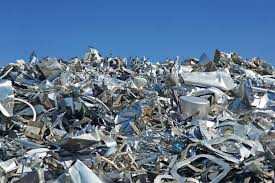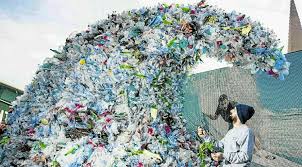Waste to Art business refers to turning things people throw away, like old bottles or scrap metal, into beautiful and useful art. Instead of letting these things go to waste in landfills, artists use their creativity to give them a new life.
This not only makes cool and unique artworks but also helps the environment by reducing waste. It’s a business that shows we can make something valuable out of things others might see as trash.
In a world grappling with environmental challenges, the Waste to Art business emerges as a beacon of innovation and sustainability. This unique concept revolves around converting discarded materials into stunning pieces of art, breathing new life into items that would otherwise end up in landfills.
Now let us explore the fascinating realm of waste to art and its profound impact on both the environment and the art market.
1. The Essence of Waste to Art
Waste to Art is more than just a business; it’s a movement that seeks to redefine our relationship with waste. Instead of viewing used and discarded items as mere refuse, this approach treats them as valuable resources for creative expression.
Artists, inspired by the concept, utilize a diverse range of materials, from scrap metal and plastic to old newspapers and broken glass, to craft visually captivating and thought-provoking artworks.
2. Environmental Impact
One of the primary virtues of Waste to Art is its positive contribution to environmental conservation. By repurposing materials that would otherwise contribute to pollution and waste buildup, this business model aligns with the principles of recycling and upcycling.
The reduction in waste sent to landfills directly translates into a decrease in environmental degradation, fostering a more sustainable and eco-friendly way of living.
3. Community Engagement
Beyond its environmental benefits, Waste to Art also promotes community engagement. Local artists often collaborate with community members, schools, and businesses to collect materials for their projects.
This not only raises awareness about the importance of waste reduction but also creates a sense of collective responsibility. Workshops and exhibitions further encourage active participation, turning the process of waste transformation into a communal experience.
4. Economic Opportunities
The Waste to Art business is not just an environmental and social endeavor, it also presents economic opportunities. Artists involved in this field not only contribute to the reduction of waste but also generate income through the sale of their unique creations.
Additionally, businesses that support and invest in Waste to Art initiatives find themselves aligning with a growing market trend, catering to environmentally conscious consumers who appreciate the value of sustainable products.
Challenges and Future Prospects
While the Waste to Art movement has gained momentum, challenges such as material sourcing, public awareness, and market demand still exist. However, the potential for growth is immense.
As more individuals and businesses recognize the importance of sustainable practices, the Waste to Art business is poised to become a mainstream force, transforming the way we perceive and manage waste.
Waste to Art is not merely a business venture; it is a powerful convergence of creativity, environmental stewardship, and community engagement.
Through repurposing discarded materials, this innovative approach transcends traditional notions of art and waste, ushering in a new era where trash is not the end but the beginning of something beautiful.
As we navigate the challenges of a rapidly changing world, Waste to Art stands as a testament to the transformative potential of human ingenuity and the boundless beauty that can emerge from what others may consider as waste.
Read Also: Biomedical Special Waste Management Processes
The Impact of Large-Scale Sustainable Waste to Art Business

In the realm of art, a powerful movement is emerging, one that not only captivates the eye but also speaks volumes about our commitment to sustainability.
Large-scale art installations, crafted from discarded materials, are transforming public spaces into vibrant testaments of creativity and environmental consciousness.
1. Unveiling Beauty in Discards
These installations are a testament to the beauty that can be found in unexpected places. Artists are breathing new life into discarded materials, turning forgotten objects into captivating works of art.
From towering sculptures made of recycled metal to sprawling mosaics composed of reclaimed plastic, the sheer scale of these creations captures the imagination while challenging our perceptions of waste.
2. Conveying a Message of Sustainability
Beyond their aesthetic appeal, these sustainable art installations serve as powerful messengers of sustainability. They tell a story of transformation, highlighting the potential within items often dismissed as rubbish.
Through their sheer size and presence in public spaces, these artworks provoke thought and invite viewers to reconsider their relationship with the environment.
3. Engaging the Public
Perhaps the most remarkable aspect of large-scale sustainable art installations is their ability to engage the public. Positioned in parks, urban centers, and other communal areas, these artworks become focal points for communities.
They serve as conversation starters, prompting discussions about consumption, waste, and the possibilities of repurposing materials.
4. Local Stories, Global Impact
Many of these installations draw inspiration from local narratives and environmental challenges. By weaving these stories into their creations, artists not only celebrate the uniqueness of a community but also draw attention to global issues.
The art becomes a universal language, connecting people across borders through a shared commitment to a more sustainable future.
5. An Invitation to Reflect
As you stand before a large-scale sustainable art installation, you are not merely a spectator; you are an active participant in a dialogue about our collective responsibility.
The scale of these artworks mirrors the magnitude of the environmental challenges we face. They invite reflection on the choices we make daily and the profound impact these choices have on the world around us.
In the ever-evolving landscape of art, these installations stand out as beacons of change. They not only showcase the ingenuity of artists but also challenge us to reconsider the value we place on the objects we discard.
Large-scale sustainable art installations are more than mere creations; they are transformative experiences, reshaping our perception of waste and inspiring a collective journey towards a more sustainable and harmonious existence.
The Importance of Waste to Art Business

The Waste to Art business is not just about making pretty things from trash, it is a crucial player in the quest for a cleaner, greener planet.
This innovative approach holds immense importance in our world today, addressing environmental concerns, fostering creativity, and weaving together communities in a shared commitment to sustainability.
Here are the Importance of waste to art business;
1. Environmental Stewardship: At the heart of Waste to Art lies a profound commitment to environmental stewardship. By transforming discarded materials into beautiful artworks, this business model significantly reduces the burden on landfills.
Instead of adding to the piles of waste that harm our planet, Waste to Art breathes new life into old things, contributing to a circular economy where resources are reused and repurposed.
2. Raising Awareness: Waste to Art serves as a powerful tool for raising awareness about the impact of our consumption habits. Through the creation of visually striking pieces, artists and communities bring attention to the sheer volume of waste generated and the potential for positive change. T
his heightened awareness encourages individuals to reconsider their own waste generating behaviors, promoting a more sustainable lifestyle.
3. Promoting Creativity and Innovation: One of the standout features of Waste to Art is its celebration of creativity and innovation. Artists working in this field use their skills to envision new possibilities for discarded materials, pushing the boundaries of traditional art forms.
This not only showcases the versatility of waste but also inspires others to think creatively about problem-solving and resource utilization in various aspects of life.
4. Community Engagement and Empowerment: Waste to Art is more than a business; it’s a community-driven movement. Local artists often collaborate with schools, businesses, and residents to collect materials for their projects. This collaborative effort fosters a sense of community engagement and empowerment.
Workshops and exhibitions provide platforms for people to actively participate in the process of waste transformation, reinforcing the idea that everyone can contribute to positive environmental change.
5. Economic Opportunities: Beyond its environmental and social impact, Waste to Art creates economic opportunities. Artists involved in this field not only contribute to waste reduction but also generate income through the sale of their unique creations.
This economic aspect encourages sustainability-minded businesses to support and invest in Waste to Art initiatives, contributing to the growth of a market that values both creativity and environmental responsibility.
The Waste to Art business is a beacon of hope in a world grappling with environmental challenges. Its importance extends beyond the creation of aesthetically pleasing artworks; it speaks to our collective responsibility to protect the planet and find innovative solutions to pressing issues.
By transforming waste into art, we not only reduce environmental impact but also inspire a mindset shift toward sustainability and creativity. The significance of Waste to Art lies in its ability to turn what some may see as trash into a powerful catalyst for positive change.
Read Also: The Art of Waste to Jewelry Business
The Advantages and Disadvantages of Waste to Art Business

The Waste to Art business is a dynamic force, offering a creative solution to waste management challenges. Like any venture, it comes with its share of advantages and disadvantages. Let’s explore both sides to understand the impact of this innovative approach to recycling and art.
1. Advantages
1. Environmental Sustainability: Waste to Art significantly reduces the amount of waste sent to landfills, contributing to a more sustainable and eco-friendly environment.
2. Creativity and Innovation: The business encourages artists to think outside the box, pushing the boundaries of traditional art forms and fostering a culture of innovation.
3. Community Engagement: Waste to Art often involves collaboration with communities, schools, and businesses, creating a sense of shared responsibility for waste reduction.
4. Economic Opportunities: Artists involved in Waste to Art can generate income by selling their unique creations, providing economic incentives for sustainable practices.
2. Disadvantages
1. Material Sourcing Challenges: Finding a consistent supply of suitable materials can be a challenge, depending on the location and the type of waste materials required for artistic projects.
2. Limited Market Awareness:Despite its growing popularity, Waste to Art may still lack widespread recognition, limiting market demand for these unique creations.
3. Perception and Aesthetics: Some individuals may find it challenging to appreciate the aesthetics of art created from discarded materials, impacting its acceptance in mainstream art circles.
4. Dependency on Consumer Mindset: The success of Waste to Art is somewhat dependent on consumers embracing a sustainable mindset and actively seeking out products from this niche.
The Waste to Art business presents a compelling case for environmental sustainability, creativity, and community engagement. While facing challenges such as material sourcing and market awareness, its advantages in waste reduction, economic opportunities, and fostering innovation underscore its potential to reshape how we view and interact with waste.
As the world continues to embrace sustainable practices, the Waste to Art business stands as a promising avenue for turning trash into both artistic treasures and positive environmental impact.
Read Also: DIY 101 Guide: How to Crochet a Blanket

